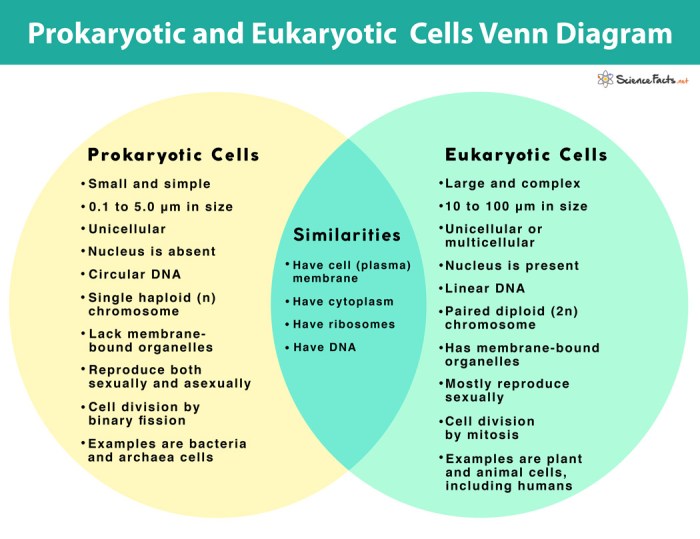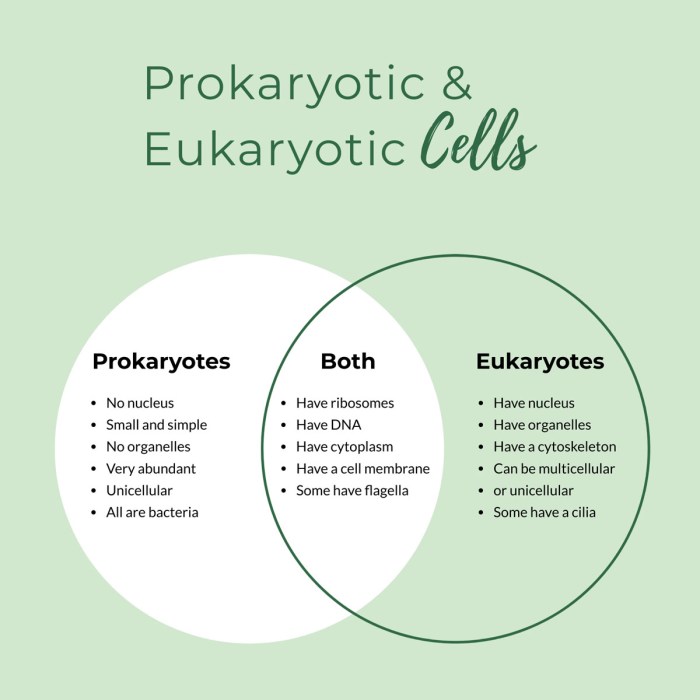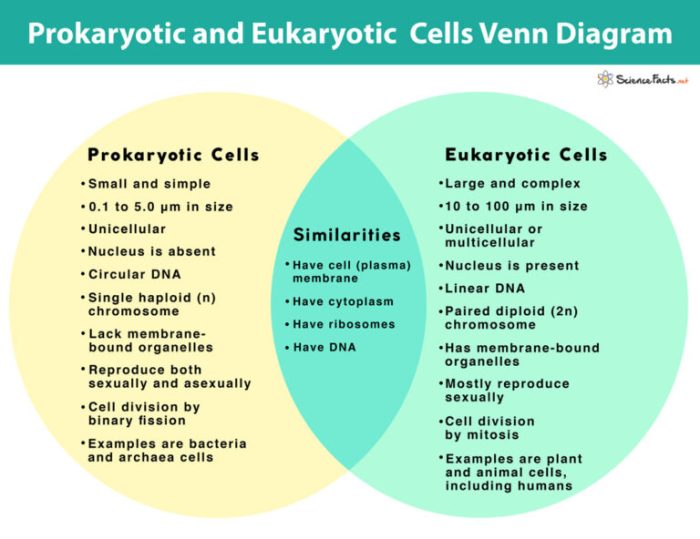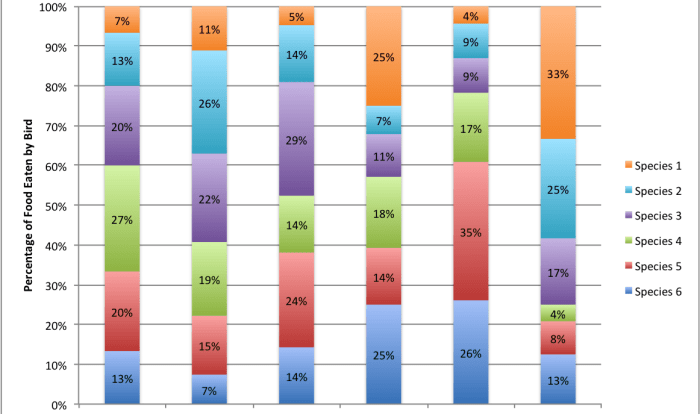The Venn diagram for prokaryotes and eukaryotes is a powerful tool that allows us to visualize and compare the similarities and differences between these two fundamental groups of organisms. By examining the overlapping and distinct sections of the diagram, we can gain a deeper understanding of their unique characteristics and evolutionary relationships.
Prokaryotes and eukaryotes represent two major branches of the tree of life, each with its own distinctive set of features. Prokaryotes, which include bacteria and archaea, are typically smaller and simpler than eukaryotes, lacking a nucleus or other membrane-bound organelles.
Eukaryotes, on the other hand, are more complex, with a nucleus and other specialized organelles that compartmentalize cellular functions.
Venn Diagram Structure

To visualize the similarities and differences between prokaryotes and eukaryotes, a Venn diagram is an effective tool. This diagram consists of two overlapping circles, one representing prokaryotes and the other representing eukaryotes. The overlapping section represents characteristics that are shared by both groups, while the non-overlapping sections represent unique characteristics of each group.
Prokaryote Characteristics
Prokaryotes are unicellular organisms that lack a nucleus and other membrane-bound organelles. They are typically smaller than eukaryotes, ranging in size from 0.1 to 5 micrometers. Prokaryotes have a simple cellular structure, consisting of a cell membrane, cytoplasm, and DNA.
They can be found in a wide variety of habitats, including soil, water, and the bodies of plants and animals.
Types of Prokaryotes, Venn diagram for prokaryotes and eukaryotes
- Bacteria: Bacteria are the most common type of prokaryote. They are found in all environments on Earth and can be either beneficial or harmful to humans.
- Archaea: Archaea are a group of prokaryotes that are distinct from bacteria. They are found in extreme environments, such as hot springs and deep-sea hydrothermal vents.
Eukaryote Characteristics

Eukaryotes are unicellular or multicellular organisms that have a nucleus and other membrane-bound organelles. They are typically larger than prokaryotes, ranging in size from 10 to 100 micrometers. Eukaryotes have a complex cellular structure, including a cell membrane, cytoplasm, nucleus, and various organelles.
Examples of Eukaryotes
- Animals: Animals are multicellular eukaryotes that are characterized by their ability to move and feed on other organisms.
- Plants: Plants are multicellular eukaryotes that are characterized by their ability to produce their own food through photosynthesis.
- Fungi: Fungi are a group of eukaryotes that are characterized by their ability to absorb nutrients from other organisms.
Shared Characteristics: Venn Diagram For Prokaryotes And Eukaryotes

Prokaryotes and eukaryotes share a number of similarities, including:
- Genetic material: Both prokaryotes and eukaryotes have DNA as their genetic material.
- Metabolic processes: Both prokaryotes and eukaryotes use similar metabolic processes to obtain energy.
- Reproduction: Both prokaryotes and eukaryotes reproduce by binary fission.
These shared characteristics suggest that prokaryotes and eukaryotes evolved from a common ancestor.
Unique Characteristics

Prokaryotes and eukaryotes also have a number of unique characteristics that distinguish them from each other. These include:
- Cell size: Prokaryotes are typically smaller than eukaryotes.
- Cell structure: Prokaryotes lack a nucleus and other membrane-bound organelles, while eukaryotes have a nucleus and other membrane-bound organelles.
- Cell division: Prokaryotes reproduce by binary fission, while eukaryotes reproduce by mitosis.
- Nutrition: Prokaryotes can be either autotrophic or heterotrophic, while eukaryotes are typically heterotrophic.
- Response to environmental stimuli: Prokaryotes are typically more resistant to environmental stresses than eukaryotes.
Applications of Venn Diagram
The Venn diagram can be used to understand the relationships between prokaryotes and eukaryotes. By comparing and contrasting the two groups, we can see how they are similar and how they are different. This information can help us to better understand the evolution of life on Earth.
Table of Key Differences and Similarities
| Characteristic | Prokaryotes | Eukaryotes |
|---|---|---|
| Cell size | 0.1-5 micrometers | 10-100 micrometers |
| Cell structure | No nucleus or membrane-bound organelles | Nucleus and membrane-bound organelles |
| Cell division | Binary fission | Mitosis |
| Nutrition | Autotrophic or heterotrophic | Heterotrophic |
| Response to environmental stimuli | More resistant to environmental stresses | Less resistant to environmental stresses |
Commonly Asked Questions
What is the main difference between prokaryotes and eukaryotes?
The main difference between prokaryotes and eukaryotes is the presence of a nucleus and other membrane-bound organelles in eukaryotes. Prokaryotes lack these structures and are typically smaller and simpler than eukaryotes.
What are some examples of prokaryotes?
Examples of prokaryotes include bacteria, such as Escherichia coli and Bacillus subtilis, and archaea, such as Methanobacterium and Sulfolobus.
What are some examples of eukaryotes?
Examples of eukaryotes include animals, plants, fungi, and protists. Animals include humans, dogs, cats, and birds. Plants include trees, flowers, and grasses. Fungi include mushrooms, yeast, and molds. Protists include algae, protozoa, and slime molds.

